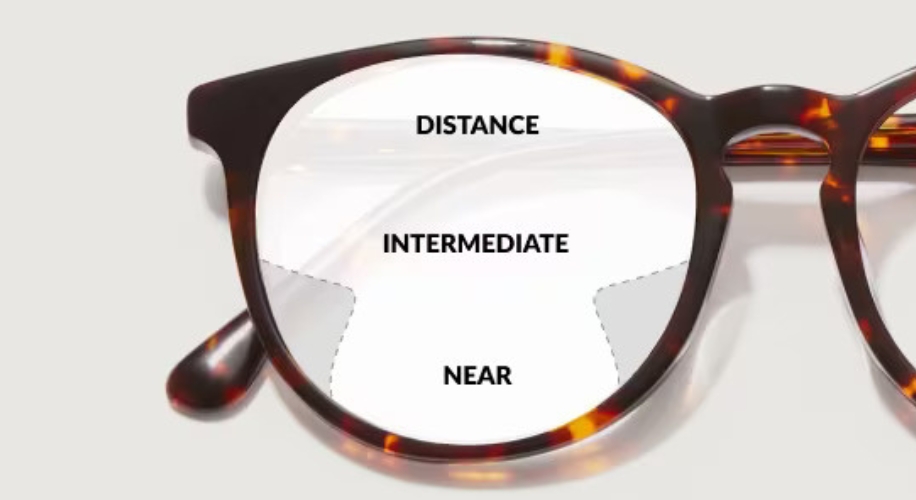Progressive Lenses: The Technology Behind Better Vision

Imagine a pair of glasses that allows you to see clearly across all distances without the need for segmented lenses. Progressive lenses offer this seamless vision transition and have revolutionized the way we address presbyopia, the age-related loss of near focusing ability. Let’s explore the innovative technology behind progressive lenses and how it can benefit your daily life.
What Are Progressive Lenses?
Progressive lenses, also known as no-line bifocals or varifocal glasses, are multifocal eyewear that provide a smooth, gradual change in lens strength. They are designed to give you a clear vision at all distances—near, intermediate, and far. Unlike traditional bifocals or trifocals, progressive lenses eliminate abrupt vision changes, offering a more natural correction of presbyopia.
Key Benefits of Progressive Lenses
- Continuous Vision Correction: Progressive lenses offer a seamless transition from distance correction to near correction, eliminating the “jump” experienced with standard bifocals.
- Convenience: One pair of glasses for all your vision needs means no more switching between multiple pairs.
- Appearance: With no visible lines, progressive lenses provide a younger, more contemporary look.
- Versatility: Ideal for a variety of tasks, from reading to driving, without compromising on vision quality or comfort.
The Technology Behind Progressive Lenses

Progressive lenses are crafted using advanced technology to create a lens with multiple focal points, precisely tailored to the wearer’s vision needs. The surface of a progressive lens is a complex map of curvatures, each providing a different lens power, meticulously blended to create a smooth transition from distance to near vision.
Lens Power Progression
At the top of the lens, the curvature provides the prescription needed for distance vision. As the eye travels downward, the lens power gradually increases to accommodate intermediate and then near vision. This complex curvature is achieved through sophisticated lens design software and precise manufacturing techniques.
Customized for Your Eyes
Progressive lenses are personalized for each individual, taking into account the specific presbyopia progression. Accurate measurements are essential to ensure that the transition zones are positioned correctly for your eyes. With Zenni Optical’s progressive lenses, you can rest assured that your glasses are tailored to your unique visual needs, providing comfort and clarity.
Adapting to Progressive Lenses

Transitioning to progressive lenses can take some time as your eyes need to adjust to the different lens zones. However, most wearers adapt quickly and enjoy the benefits of uninterrupted vision. To ease the adaptation period:
- Wear your progressives consistently to help your eyes adjust.
- When reading or doing close work, learn to look through the lower part of the lens.
- Move your head rather than just your eyes when looking side to side.
- Be patient with yourself and allow some time for your visual system to adapt.
Choosing the right frame style is also crucial for the performance of progressive lenses. Frames that are too small may not have enough vertical height to accommodate the progressive power gradient. At Zenni Optical, you can find a wide range of frame styles suitable for progressive lenses, ensuring both functionality and fashion.
Embracing progressive lens technology can significantly improve your quality of life, providing convenience and a more natural way of seeing the world. If you’re considering progressive lenses, Zenni Optical offers affordable options, expert advice, and a commitment to ensuring you get the best vision possible. Explore our range of budget-friendly eyewear online and discover the ideal progressive lenses for your lifestyle.
About the Author: Dr. Steven Liem, OD, FAAO
Dr. Steven Liem, O.D., F.A.A.O. is an optometrist based in Pasadena, California. After obtaining his doctorate from UC Berkeley’s School of Optometry, he completed his residency in Pediatrics, Vision Therapy & Rehabilitation and became a Fellow of the American Academy of Optometry. When he isn’t busy streaming or making Youtube videos about video games, Dr. Liem aims to broaden accessibility to vision health through his involvement in optometric industry and tech.


 Canada
Canada